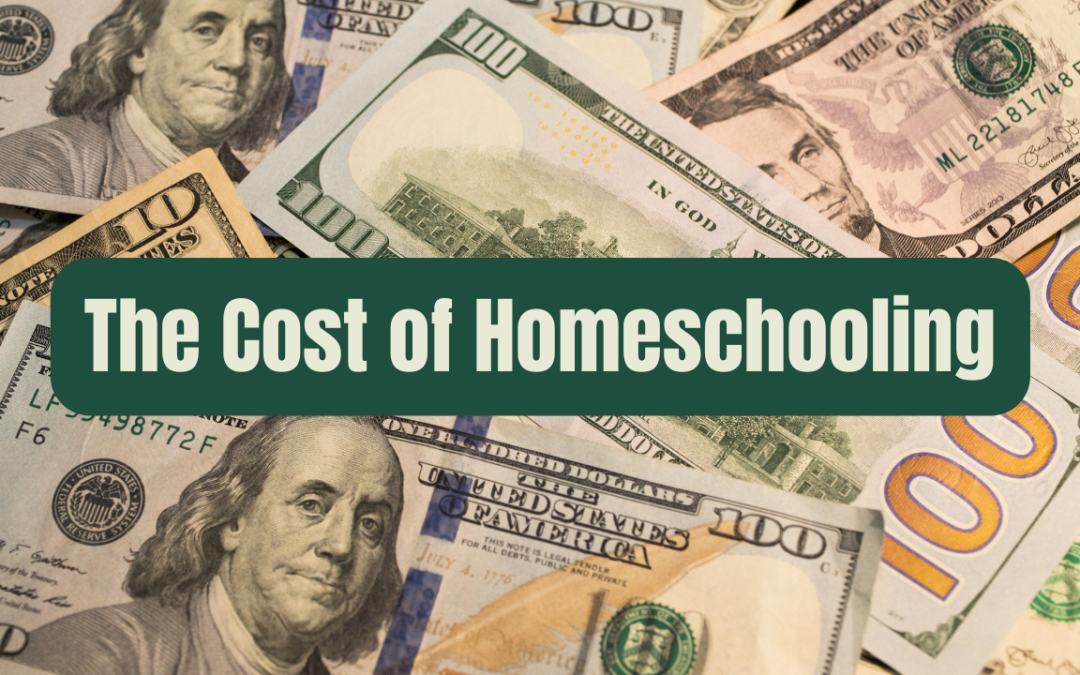Based on post-pandemic statistics, it has become apparent that parents are enrolling their children in homeschooling in record numbers. The actual cost of homeschooling runs at the top of the list of questions families ask when they are preparing to establish a home school. Lifestyle questions related to homeschooling are part of the important decisions that must be made, but families must also focus on a way to pay for the new lifestyle.
It’s obvious that homeschooling costs are different for each family based on several variables:
- The number of children in the family that will be home schooled,
- The type of curriculum the family chooses to use,
- Whether or not one parent will quit their job to act as the principal instructor,
- The dollar amount of taxes the family will still have to pay to support public education, and
- Whether or not home-schooled children will participate in extra-curricular activities.
COST BREAKDOWN
General per/student cost estimates turn up frequently on homeschooling websites. Most estimates total about $500-$2550 per student/per year depending on several factors. Basic costs include:
- $200 – $700 Curriculum purchase and testing fees
- $100 – $600 Books and supplies
- $100 – $1000 Extracurricular activities and sports
- $100-$250 Field Trips
OPTIONAL EXPENSES
If both parents in the homeschool family are planning to continue working at their regular job, you might want to consider hiring a tutor or even a full-time teacher to handle duties parents are unable to cover. Ballpark costs for hiring tutors or teachers are completely optional and include:
- $700-$4500 Part time tutor,
- $12K to $35K Shared private teacher, or
- $35K to $70K Full-time private teacher.
NOTE: There are no federal or state programs that pay parents directly to homeschool their children.
OTHER EXPENSES TO CONSIDER:
The biggest “extra” expense parents tend to forget when creating a home school budget is the cost of one parent giving up their job to become the teacher/administrator of the school. There are ways to avoid this cost, but it’s common for one parent to take over the full-time responsibility of running the school. When considering this possibility, look at all the costs attached to maintaining a full-time job and be sure to deduct them from the take-home pay number. You won’t be having to pay for parking, transportation, tolls, wardrobe requirements, etc. Then, often the best approach is to eliminate the lowest salary and assign that person the full-time administrative task.
The second most commonly forgotten expense is taxes. You pay taxes to support public schools. Homeschooling is not tax deductible in the U.S. In most counties, parents who homeschool their children and own their homes must also continue to pay property taxes to fund public schools.
TAX CREDITS AND DEDUCTIONS
In the U.S., most areas do not offer tax deductions for running a homeschool. There are no tax provisions that allow a write off for homeschool expenses. And, as mentioned above, parents who homeschool their children must continue to pay taxes to fund public schools. There are no federal tax credits or deductions applying specifically to homeschools.
A few states do offer tax breaks for families who choose to homeschool. If you live in one of these five states, be sure to check on current regulations. If you live in the other 45 states, take the time to check on whether your state might have new tax break regulations for homeschooling.
- Illinois has historically sponsored the Education Expense Credit for eligible families. The credit has been worth up to $750 a year. (NOTE: Some sources report that full-time homeschool parents in Illinois may qualify for the Education Expense Credit if their expenses are over $250/year.)
- Indiana offers a tax deduction up to $1000/year for out-of-pocket homeschool expenses. (NOTE: Applies to elementary or high school-age students only.)
- Louisiana offers a 50% tax deduction for educational expenses up to $5000/year per dependent student.
- Minnesota offers a K-12 Education Credit to qualifying homeschoolers for non-religious materials like textbooks and school supplies.
- Iowa extended a textbook tax credit to homeschool students starting on April 13, 2022. The textbook or instructional material must be required by an Iowa public school. The credit is calculated to cover 25% of up to $2000 per dependent student for textbooks and instructional materials.
FEDERAL ASSISTANCE
The following federal programs may help defray homeschooling costs in qualifying situations.
- Medical tax deductions for special education and tutoring costs, including Braille school for the vision impaired or a sign language tutor for deaf students.
- A deductible charitable contribution program that allows deductions for qualifying cash and material donations to an approved nonprofit homeschool association.
- A Coverdell Education Savings Account (ESA) can potentially be used to cover education expenses for primary, secondary, and higher education students.
For all three of these programs, contact a tax advisor for guidance in applying for and receiving deductions.
IN CLOSING
Homeschooling can save family budget money as compared to the cost of private school or public school. It’s important to keep focused on the less obvious costs, which sometimes total more than the more common costs of curriculum and supplies.
NOTE: For great homeschool curriculum packages and excellent staff assistance in implementing your homeschool program, visit www.globalstudentnetwork.com.
RESOURCES:
The Cost of Homeschooling (investopedia.com)
Here’s How Much It Costs to Homeschool Your Kids (parents.com)
2023 Homeschooling Costs — Programs & Tax Credits (tutors.com)
The Real Cost Of Education In The USA (Infographic) | GradePower Learning
School Vouchers: What You Need to Know (understood.org)
15 States With School Vouchers to Help Pay for Private School (thepennyhoarder.com)

